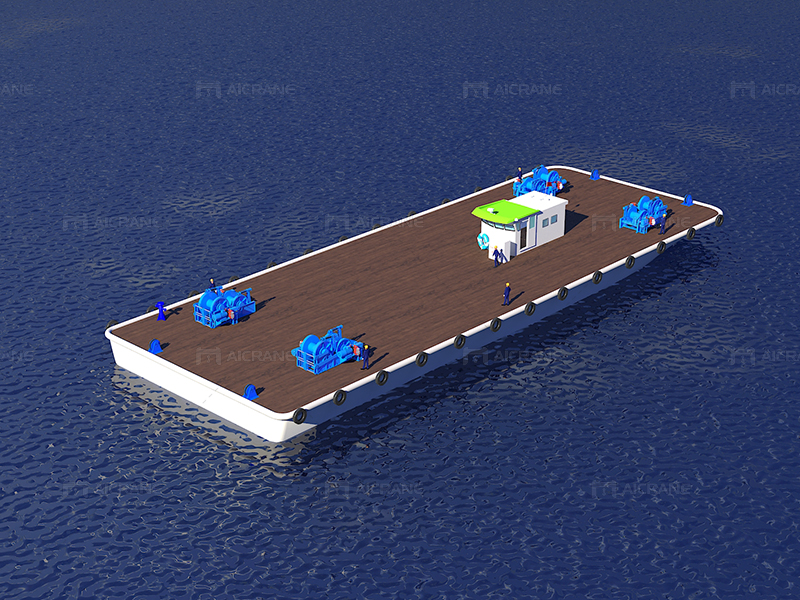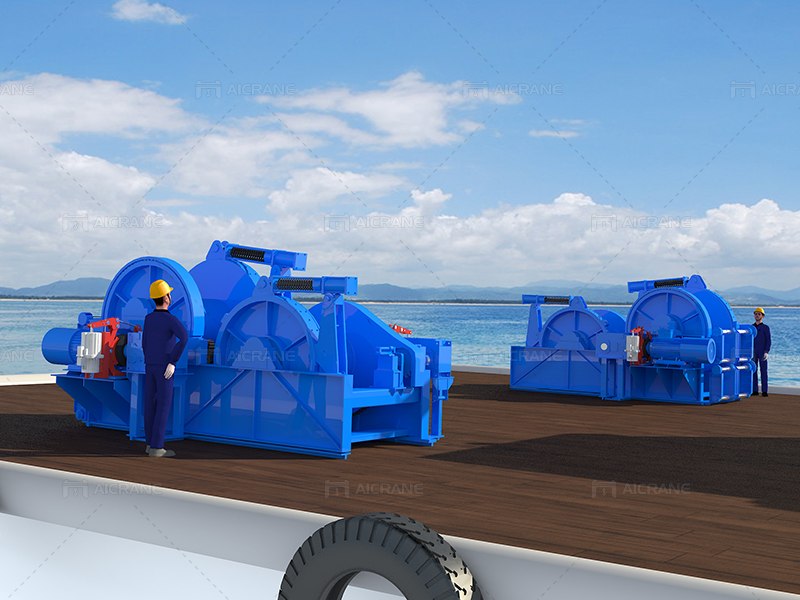In the dynamic world of maritime operations, ship winches emerge as indispensable tools, offering the muscle needed to manipulate heavy loads and navigate the challenges of the open sea. A common query that arises is whether ship winches can serve a dual purpose – both lifting and pulling operations. This article seeks to unravel the capabilities of ship winches, examining the factors that determine their suitability for these distinct but interconnected functions.

Understanding Ship Winches:
A ship winch is a mechanical device designed to hoist or haul in heavy objects, typically using a cable or rope. These winches play a pivotal role in various maritime activities, including mooring, cargo handling, and towing. The two primary types of ship winches are electric and hydraulic, each with its unique advantages and applications.
Lifting Operations with Ship Winches:
Lifting operations involve the elevation of heavy loads, such as cargo, equipment, or even personnel. Ship winches employed for lifting are equipped with features that ensure controlled and precise vertical movement. The design of the winch, particularly the drum and its capacity, is crucial in determining the suitability for lifting operations. Additionally, safety mechanisms, load monitoring systems, and braking capabilities are integral components of winches dedicated to lifting tasks.
Pulling Operations and Ship Winches:
Pulling, or towing, is a fundamental aspect of maritime activities, involving the movement of vessels, barges, or other structures through the water. In pulling operations, ship winches are tasked with providing a steady and controlled horizontal force. The winch’s line pull capacity, speed control, and braking system become paramount in ensuring a secure and efficient pulling operation. These winches must handle dynamic forces and varying resistance levels, necessitating a design that can adapt to different scenarios.

The Dual Role: Can a Ship Winch Do Both?
The versatility of a ship winch to handle both lifting and pulling operations hinges on several key factors. While historically winches were often designed for specific functions, modern advancements have given rise to versatile systems that can seamlessly transition between lifting and pulling. Here are the key factors that determine a ship winch’s capability for these dual roles:
Line Pull Capacity: The line pull capacity of a ship winch is a critical factor. For lifting operations, the winch must have sufficient power to raise heavy loads vertically, while for pulling, it needs the strength to handle horizontal forces. Versatile winches are engineered to offer a balanced line pull capacity, making them adaptable to both scenarios.
Drum Design and Size: The design and size of the winch drum influence its ability to handle different tasks. Specialized drums with features such as variable speed control and multiple layers contribute to optimal performance in various situations, from slow and controlled lifting to steady and powerful pulling.
Control Systems: Advanced control systems are essential for precision in both lifting and pulling operations. Features like variable speed control, load monitoring, and emergency braking contribute to the winch’s adaptability, ensuring safe and efficient performance in diverse maritime tasks.
Power Source: The power source of the ship winch, whether electric or hydraulic, plays a role in its versatility. Electric winches are known for their precise control, making them suitable for lifting, while hydraulic winches offer robust performance and are well-suited for heavy-duty pulling applications.
Safety Features: Safety is paramount in maritime operations. A winch designed for both lifting and pulling should incorporate safety features such as overload protection, emergency braking, and fail-safe mechanisms to mitigate potential risks during operations.
Case Studies: Examples of Versatile Ship Winches
To illustrate the practical application of ship winches in handling both lifting and pulling operations, let’s explore a few case studies where these machines have demonstrated their versatility.
Cargo Handling on Container Ships:
Container ships require winches that can handle both the lifting of containers during loading and unloading operations and the controlled pulling during mooring and towing activities. Versatile ship winches streamline these diverse tasks, optimizing efficiency in port operations.
Offshore Construction Vessels:
Offshore construction vessels often engage in lifting heavy structures and equipment during installation operations and pulling operations for anchor handling or barge positioning. Winches on these vessels are designed to seamlessly switch between these functions, enhancing operational flexibility.
Conclusion:
In conclusion, the versatility of ship winches to handle both lifting and pulling operations depends on a combination of design, capacity, control systems, and safety features. As technological advancements continue to shape the maritime industry, the demand for winches capable of meeting the diverse needs of lifting and pulling operations is likely to grow. Versatile ship winches play a crucial role in enhancing the efficiency and adaptability of maritime operations, proving that these mechanical workhorses can indeed excel in a dual capacity, navigating the seas with unparalleled strength and flexibility. For more info, visit https://steelmillcranes.com/